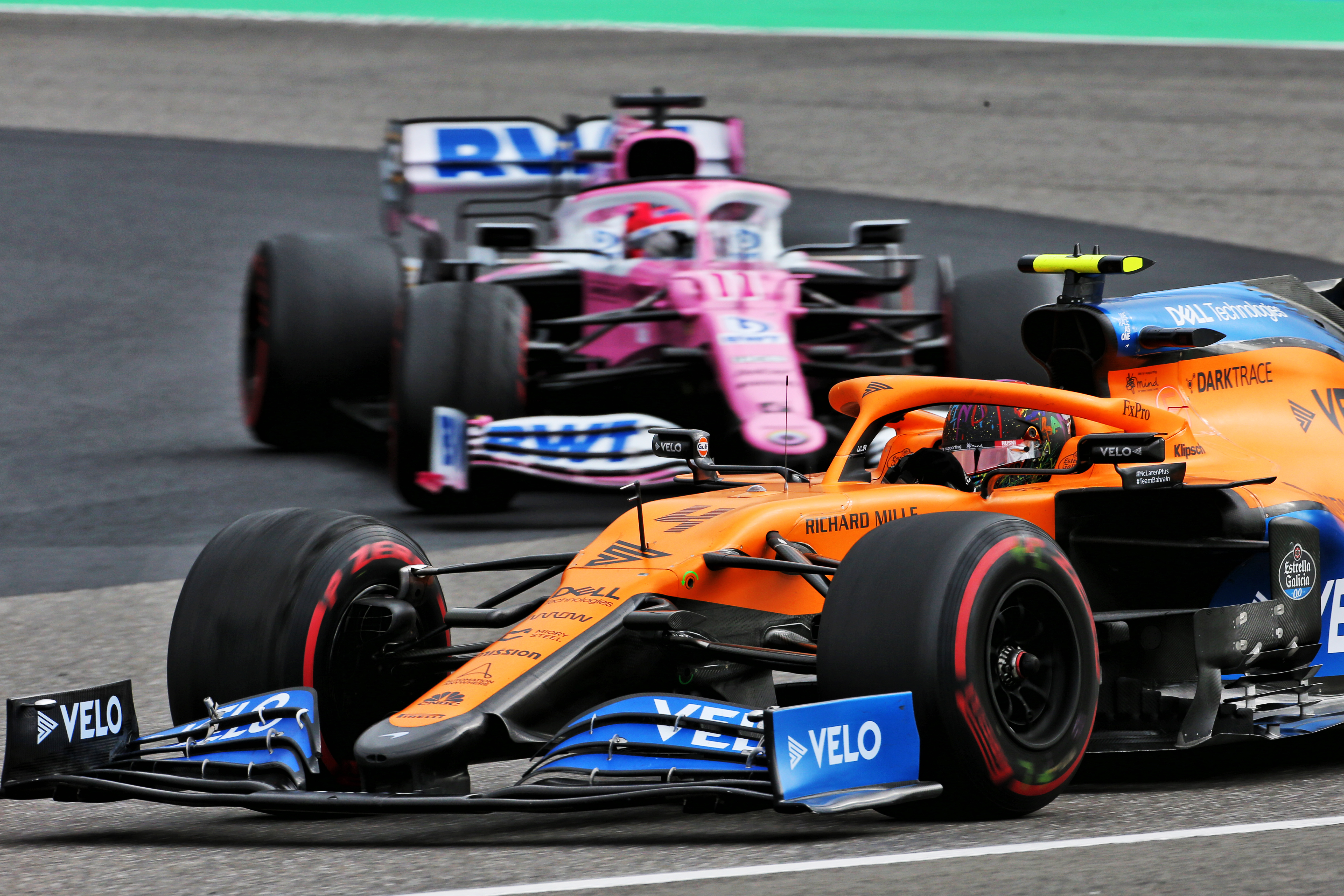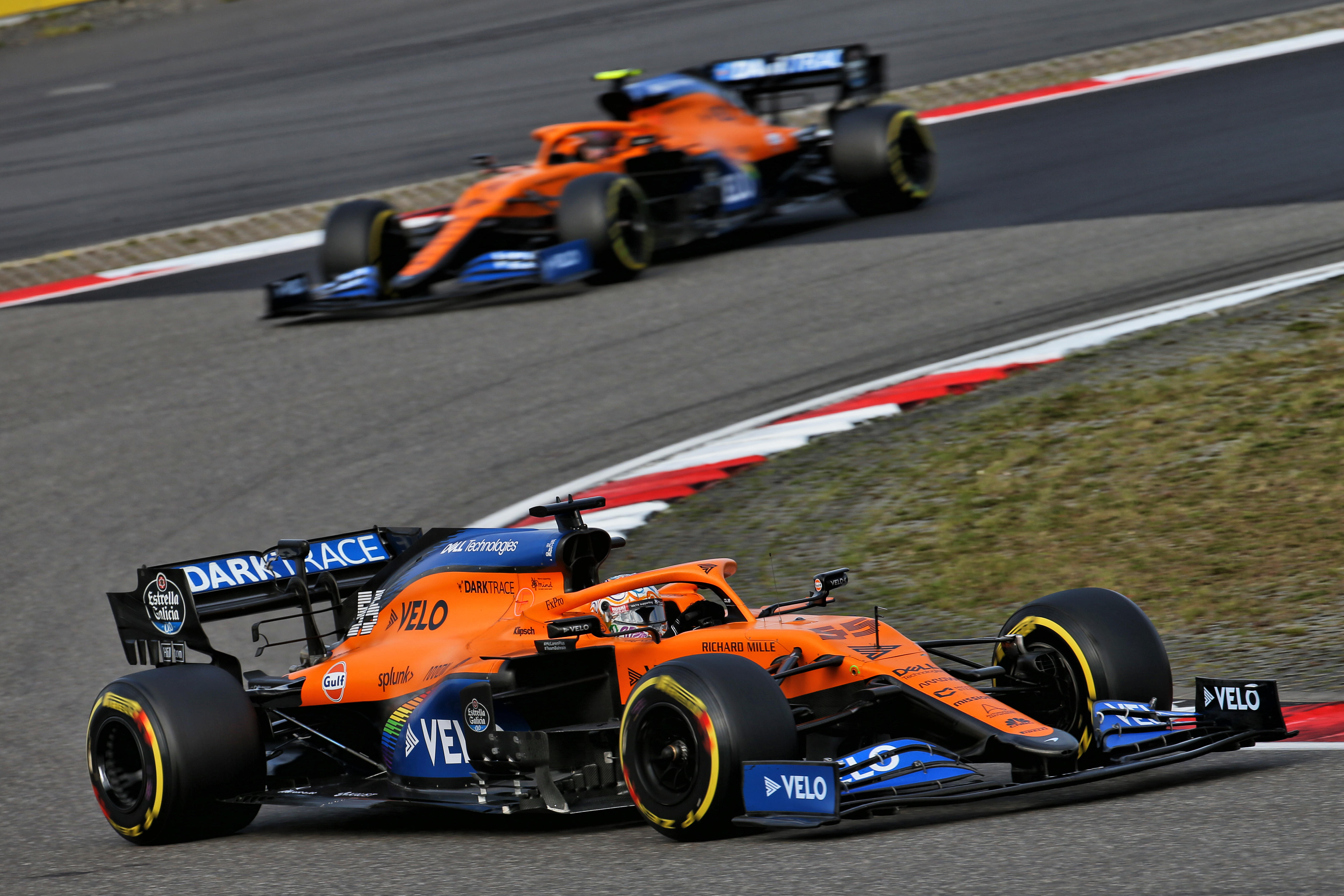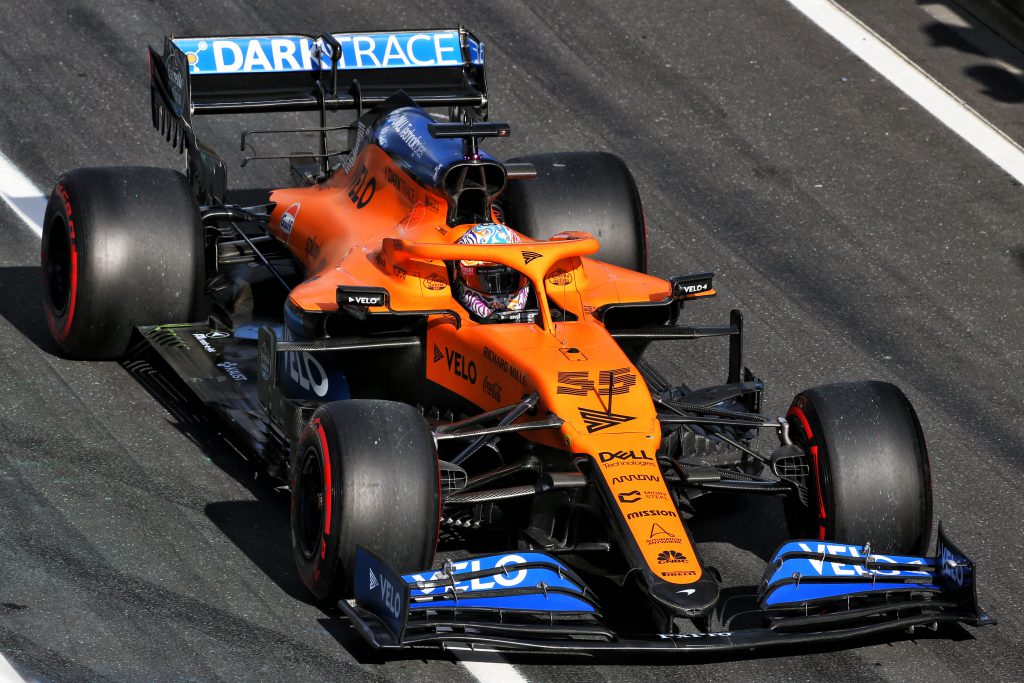Up Next

McLaren will start the Portuguese Grand Prix weekend with what technical director James Key describes as a “slight hybrid” of its old specification and newer-specification parts, including the new nose that was raced by Lando Norris at Sochi and Carlos Sainz at the Nurburgring.
The team had planned to introduce what team principal Andreas Seidl had described as “the parts to complete the package” on Friday at the Nurburgring but lost both sessions owing to the fact the medical helicopter could not fly.
Sainz ended up running the new nose and some of the package, but not all components, but wasn’t happy with the feel of the car.
McLaren now plans to phase in parts during practice during the Portuguese Grand Prix weekend and at Imola, with Key confirming that it will start FP1 with a package close to the one raced competitively by Norris at the Nurburgring that will include the new nose.
“It’s a slight hybrid from what we had, we’ve actually got the Lando spec of car effectively from the Nurburgring,” said Key when asked by The Race about the specification of car.
“That includes the new nose, which is working absolutely fine and just as we expected so that part is very much car spec now and we’re very happy with that.
“We’ve got some additional updates we’re bringing this weekend as well so we’re going to be testing those today, at least one of those could remain on the car for the rest of the weekend.
“Then the rest of the parts that we had at the Nurburgring which we didn’t get to test, we’re going to be doing exactly what we wanted to do then here so we’re going to introduce the parts bit by bit and review them and understand them in their own right as we go and see how they add up as a package.”

Key says that the team is happy that the baseline it starts the weekend with will work well and will introduce the new parts methodically to ensure it has time to understand their effectiveness.
This process is set to continue at Imola next weekend despite there being only a single 90-minute free practice session.
“We were obviously a little bit scuppered at the Nurburgring by not having a Friday to run a very complex new set of parts, so we didn’t really get the back to backs and the testing and the setup work that we wanted to do,” said Key.
“And actually we were still setting the car up within the regions that you can do within the parc ferme rules in qualifying, which is where Carlos was finding his time. So that’s how far behind schedule we were with the introduction of all that after a missed Friday.
“So we want to take it step by step, we confirmed the configuration we were happy with to start off this weekend with and we’ll be doing the work we intended to do on Friday this weekend and next weekend to gradually reintroduce the new parts and quantify them accordingly.”
Sainz was sceptical about the package that he ran at the Nurburgring, but is hopeful that progress will be made this weekend.
Having qualified 10th, 0.251s slower than team-mate Lando Norris’s old-specification car, Sainz finished fifth in the race but described it as “60 laps of struggle”.
“We are trying to make the car faster,” said Sainz when asked by The Race about his confidence in the upgrades working. “The fact that the team keeps bringing new parts to the track is a good sign.
“Like always in F1, there will be some bits that work and some that don’t.
“It is the case with the last aero package and it is the case in the last few races that there have been bits and pieces that have worked well and others that haven’t delivered as much performance gain as we hoped for.
“Going into Portugal, having understood which parts we think are helping, which of the parts are probably not helping as much, we try and put together a bit of a compromise on the car and make it as fast as possible.
“We do our learning, we do our investigations and we’ll try to put together in Portugal the best possible car. There’s going to be some interesting tests to do now for the rest of the weekend.”

Key is upbeat about the potential that has been unlocked by the nose change, which is a reward for the rapid work done by the team to turn it round in time to try it for the first time at Mugello in September.
The change follows a direction set by Mercedes that Red Bull and Renault have also followed and once the accompanying package is understood should deliver a clear step in performance.
“It’s something that we had planned quite early before the world changed and the season was compressed into the second half of this year so we had to work very quickly when the shutdown period ended to try and squeeze a homologated, in terms of its impact test, to be available,” said Key.
“It was hard work and I’m glad to say we passed first time but we did leave slack in the system and a bit of margin there just in case we had an issue.
“It’s quite a small structure so it has to absorb a lot of energy for a very small cross-sectional area at the front. The good thing was that we were able to run it in Mugello and Russia so it allowed us to get some initial data.
“Aerodynamically, it works fine. It’s the start of a broader conceptual change around the front of the car to exploit different ways of doing things.
“What you are targeting is the same thing aerodynamically but it’s just a different way of doing it and we recognised that that sort of philosophy, which is not dissimilar to what Red Bull have done a bit this year with their nosecone, it’s similar to Mercedes and Renault, so it’s a similar thing, it’s just introduced a bit later on.
“We want to begin to exploit a new way of exploiting some of the structures that exist in that area.”





